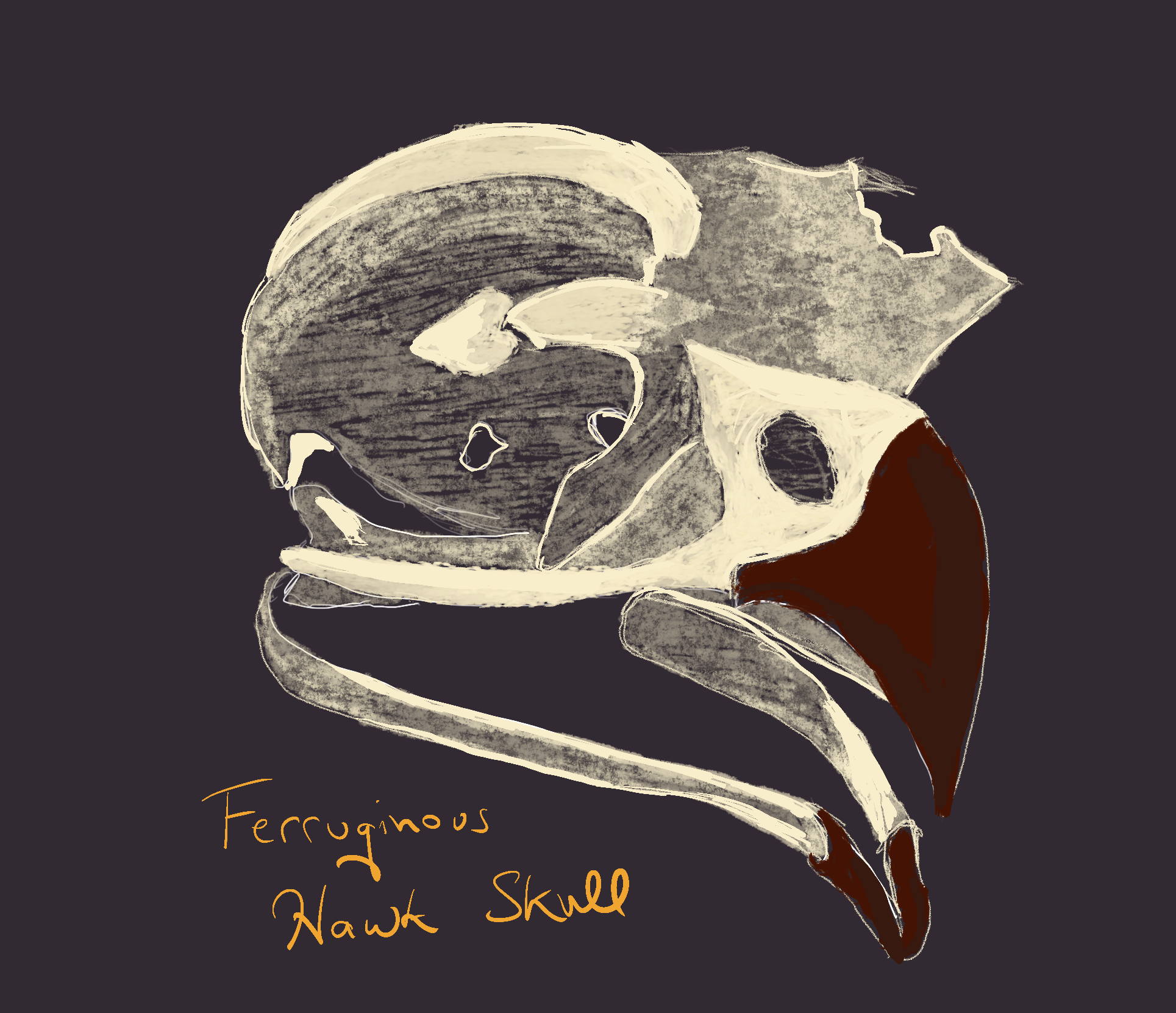96: Ferruginous Hawk
I write to you from Arapahoe, Ute, and Cheyenne land. I am interested in learning about the different animals that live in the place where I was born. Before we start with today’s animal, I want to emphasize that biological classification as understood by western society has its roots in racism, sexism, and transphobia – here’s a good explainer about why.
Buteo regalis, “royal hawk”, is the Latin name for this striking bird, which loves the arid open grasslands, sagebrush flats, and deserts of the interior west. In Colorado they occupy all but the northwestern corner of the state. They fly with their wings in a shallow V which can be recognizable from the ground and hunt by soaring or perching high before diving down to scoop up jackrabbits, snakes, squirrels, and other prey. Pairs are monogamous and return annually to the same nesting spot. They come in two distinctive color patterns – the more common “light morph” which features mostly white feathers on the underside, and the rarer “dark morph” where the feathers are a red-brown. Sound dignified? Check out the photo here to see that that’s just not true.
I made a drawing of a Ferruginous Hawk skull because I was struck by how massive the opening for the eye is. They use their eyes to see prey, and their favorite prey, at least in eastern Colorado, is the Black-Tailed Prairie Dog whose open colonies are devoid of vegetation, allowing a clear line of sight for circling hawks. Unfortunately for Ferruginous Hawks, the human destruction of prairie dogs and their habitats for all the reasons we discussed back in chapter 59, also threaten those who like to eat prairie dogs.
